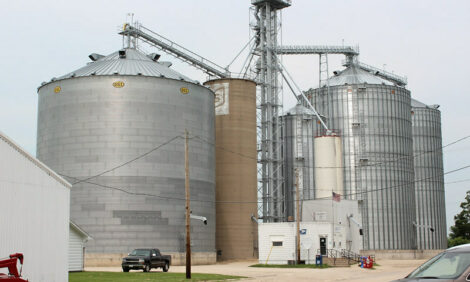



US Meat Exports Start Recovery from Port Strikes
US - While still impacted by severe congestion in the West Coast ports, February exports of US beef, pork and lamb bounced back to some degree from the totals posted in January, according to data released by USDA and compiled by the US Meat Export Federation (USMEF).Conditions are steadily improving on the West Coast, where congestion related to a labour dispute slowed container traffic over the past four months.
But the tentative contract agreement that eased tensions on the West Coast was not reached until 20 February, so this issue still had a significant impact on February meat exports.
“We didn’t see much relief from the shipping backlog until March, and container traffic in some ports still has not returned to normal,” said USMEF President and CEO Philip Seng.
“However, the new labour contract agreement definitely sent positive signals to our Asian buyers and allowed the US meat industry to begin the process of putting this crisis behind us.
“The momentum exports regained in February is encouraging, and we’re looking forward to further improvement when March results are published.”
In addition to port congestion, February exports also continued to face significant challenges such as the strong US dollar, large supplies from key competitors and market access barriers.
February pork exports were 173,771 metric tons, down five per cent year-over-year but eight per cent higher than in January.
Export value was $470.7 million, down seven per cent from a year ago but three per cent higher than in January.
Cumulative 2015 totals were 334,936 metric tons valued at $926 million, down 10 per cent in volume and 11 per cent in value from January-February 2014.
Pork exports to Korea largest since 2011
February pork exports accounted for 25 per cent of total production and 20 per cent for muscle cuts only – lower than a year ago but a significant improvement over January.
Export value per head slaughtered was $51.86 in February (down 11 per cent from a year ago) and $49.16 for January-February (down 13 per cent).
February export volume to Korea totalled 22,615 metric tons – up 79 per cent from a year ago and the largest monthly total in nearly four years – while export value nearly doubled to $72.1 million.
For January-February, exports to Korea increased 58 per cent in volume (37,877 metric tons) and 77 per cent in value ($123.5 million).
Taiwan was the only other bright spot in Asia for US pork, as February exports increased 149 per cent in volume (1,763 metric tons) and 131 per cent in value ($3.7 million) from a year ago. Through February, exports to Taiwan were up 86 per cent in volume (2,770 metric tons) and 59 per cent in value ($5.6 million) when compared to last year’s low levels.
This growth has been offset, however, by lower exports to Japan and China/Hong Kong.
February pork exports to Japan declined six per cent in volume (33,582 metric tons) and 11 per cent in value ($124.2 million) from a year ago. For January-February, exports fell nine per cent in volume (68,150 metric tons) and 16 per cent in value ($254.1 million).
For China/Hong Kong, February exports were down 41 per cent from a year ago in both volume (21,903 metric tons) and value ($49.7 million). January-February exports fell 45 per cent to 39,584 metric tons valued at $92.4 million.
Mr Seng explained: “The West Coast port situation was particularly damaging for our chilled pork exports to Japan, because it compromised our ability to meet customers’ shelf-life requirements.
“The ability to ship chilled product to Japan has always given US pork a distinct quality advantage over frozen pork from Europe.
"Now that we have chilled pork moving again, it is very important that we recapture this customer base.
"But this will not be easy, as pork from the EU continues to enter Japan at lower-than-usual prices. This is exacerbated by the strength of the US dollar versus both the yen and euro.”
February pork exports to Mexico were up eight per cent in volume (58,055 metric tons) but slipped four per cent in value ($104.9 million). For January-February, exports to Mexico totalled 117,361 metric tons (up three per cent) valued at $217.7 million (down two per cent).
Pork exports to most Western Hemisphere markets trended higher year-over-year in February, including Canada, the Dominican Republic, Honduras and Guatemala, though exports were lower to Colombia and Chile.








